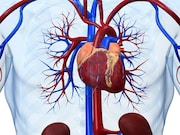Benefits seen for prevention of major cardiovascular events, higher quality-adjusted life years
WEDNESDAY, April 24, 2019 (HealthDay News) — Cardiovascular risk screening intervals based on risk category-specific progression rates would perform better and improve cost-effectiveness compared with established five-year screening intervals, according to a study published in the April issue of The Lancet Public Health.
Joni V. Lindbohm, M.D., from the University of Helsinki, and colleagues used longitudinal data from 6,964 participants in the British Whitehall II study (aged 40 to 64 years at baseline) to compare different screening intervals in terms of timely detection of high-risk individuals, cardiovascular events prevented, and health care costs. Data included repeated biomedical screenings at five-year intervals and were linked to electronic health records (from baseline [Aug. 7, 1991, to May 10, 1993] to June 30, 2015). Ten-year risk for a major cardiovascular event (myocardial infarction, cardiac death, and fatal or nonfatal stroke) was assessed using the revised Atherosclerotic Cardiovascular Disease calculator.
The researchers found that with five-year screening intervals, participants spent 7,866 person-years unrecognized in the high-risk group. Twenty-one alternative risk category-based screening intervals outperformed the five-year screening protocol among individuals in the low-, intermediate low-, and intermediate high-risk categories. Specifically, for individuals in these categories, screening intervals at seven years, four years, and one year would reduce the number of person-years spent unrecognized in the high-risk group by 62 percent, reduce the number of major cardiovascular events by 8 percent (49 events), and raise quality-adjusted life years gained.
“In terms of timely preventive interventions, the five-year screening intervals were unnecessarily frequent for low-risk individuals and insufficiently frequent for intermediate-risk individuals,” the authors write.
Copyright © 2019 HealthDay. All rights reserved.








